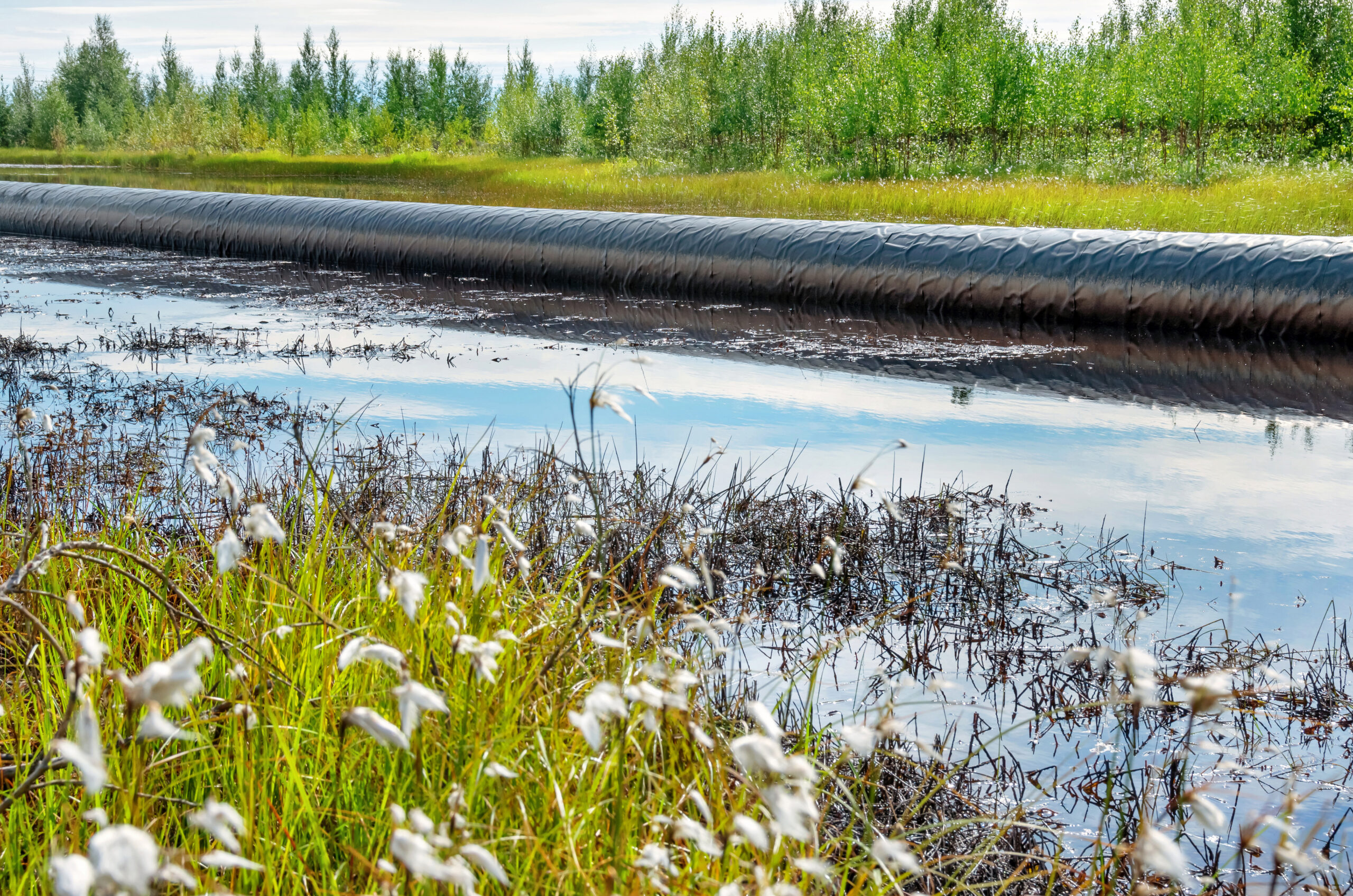
EPA & USACE Publish Proposed New Definition Of “Waters Of The United States”
March 31, 2019
By: Jeremy Smith
On February 14, 2019, the Environmental Protection Agency (EPA) and the United States Army Corps of Engineers (USACE) published their proposed rule for redefining “waters of the United States”. The Clean Water Act (CWA) is the primary legislation regarding pollution of surface waters in the United States, and prohibits the unauthorized discharges of pollutants into “navigable waters”. The CWA goes on to define “navigable waters” to be “waters of the United States, including territorial seas” (WOTUS); however, it does not expand further on this meaning. The term WOTUS applies to the entirety of the law including: national pollutant discharge elimination system (NPDES) permits, disposal of dredge/fill material, water quality standards, oil spill liability, and enforcement. So, a clear interpretation of the definition of WOTUS is imperative to understand which waters fall under the jurisdiction of the CWA.
The EPA and the United States Army Corps of Engineers USACE share the responsibility of administering the CWA. On December 11, 2018, the two agencies completed their second joint task in responding to President Trump’s Executive Order “Restoring the Rule of Law, Federalism, and Economic Growth by Reviewing the ‘Waters of the United States’ Rule”. This executive order stated that it is “in the national interest to ensure that the Nation’s navigable waters are kept free from pollution, while at the same time promoting economic growth, minimizing regulatory uncertainty, and showing due regard for the roles of Congress and the States under the Constitution”. It also directed the EPA and USACE to review the 2015 Clean Water Rule issued under the Obama Administration for consistency with these priorities, and to either rescind or revise that rule. The 2015 Clean Water Rule, which was issued jointly by EPA and USACE, sought to clarify and define “Waters of the United State” (WOTUS) in a consistent manner, particularly for streams and wetlands.
The new proposed rule outlines six clear categories of waters that would be considered “waters of the United States:”
- Traditional navigable waters (TNWs)
- Under the proposal, traditional navigable waters would be large rivers and lakes, tidal waters, and the territorial seas—such as the Atlantic Ocean, the Mississippi River, the Great Lakes, and tidally influenced waterbodies, including wetlands, along coastlines—used in interstate or foreign commerce.
- Tributaries
- In the agencies’ proposal, tributaries would be rivers and streams that flow to traditional navigable waters—such as Rock Creek, which feeds to the Potomac River in Washington, D.C.
- Under the proposal, these naturally occurring surface water channels must flow more often than just when it rains—that is, tributaries as proposed must be perennial or intermittent. Ephemeral features would not be tributaries under the proposal.
- Tributaries can connect to traditional navigable waters directly, through other “waters of the United States,” or through other non-jurisdictional surface waters so long as those waters convey perennial or intermittent flow downstream.
- Certain ditches
- A ditch under the proposed rule would be an “artificial channel used to convey water.”
- Under the proposal, ditches would be jurisdictional where they are traditional navigable waters, such as the Erie Canal, or subject to the ebb and flow of the tide.
- Ditches may also be jurisdictional where they satisfy conditions of the tributary definition as proposed and were either:
- constructed in a tributary or
- built in adjacent wetlands.
- Certain lakes and ponds
- Lakes and ponds would be jurisdictional where they are traditional navigable waters, such as the Great Salt Lake in Utah or Lake Champlain along the Vermont-New York border.
- Lakes and ponds would be jurisdictional where they contribute perennial or intermittent flow to a traditional navigable water either directly, through other “waters of the United States,” or through other non-jurisdictional surface waters so long as those waters convey perennial or intermittent flow downstream, such as Lake Pepin in Minnesota or Lake Travis in Texas.
- Lakes and ponds would be jurisdictional where they are flooded by a “water of the United States” in a typical year, such as many oxbow lakes.
- Impoundments
- Under the proposal, impoundments of “waters of the United States” would be jurisdictional.
- Adjacent wetlands
- Under the proposal, wetlands that physically touch other jurisdictional waters would be “adjacent wetlands,” such as Horicon Marsh in Wisconsin.
- Wetlands with a surface water connection in a typical year that results from:
- inundation from a “water of the United States” to the wetland or
- perennial or intermittent flow between the wetland and a “water of the United States” would be “adjacent.”
- Wetlands that are near a jurisdictional water but don’t physically touch that water because they are separated, for example by a berm, levee, or upland, would be adjacent only where they have a surface water connection described in the previous bullet through or over the barrier, including wetlands flooded by jurisdictional waters in a typical year.
The proposed rule, for the first time, also clearly outlines what would not be “waters of the United States,” including:
- Waters that would not be included in the proposed categories of “waters of the United States” listed above—this would provide clarity that if a water or feature is not identified as jurisdictional in the proposal, it would not be a jurisdictional water under the Clean Water Act.
- Ephemeral features that contain water only during or in response to rainfall.
- Ditches that do not meet the proposed conditions necessary to be considered jurisdictional,
- including most farm and roadside ditches.
- Prior converted cropland.
- This longstanding exclusion for certain agricultural areas would be continued under the proposal, and the agencies are clarifying that this exclusion would cease to apply when cropland is abandoned (i.e., not used for, or in support of, agricultural purposes in the preceding five years) and has reverted to wetlands.
- Stormwater control features excavated or constructed in upland to convey, treat, infiltrate, or store stormwater run-off.
- Wastewater recycling structures such as detention, retention and infiltration basins and ponds, and groundwater recharge basins would be excluded where they are constructed in upland.
- Waste treatment systems.
- Waste treatment systems have been excluded from the definition of “waters of the United States” since 1979 and would continue to be excluded under this proposal; however, waste treatment systems are being defined for the first time in this proposed rule.
- A waste treatment system would include all components, including lagoons and treatment ponds (such as settling or cooling ponds), designed to convey or retain, concentrate, settle, reduce, or remove pollutants, either actively or passively, from wastewater or stormwater prior to discharge (or eliminating any such discharge).
FOR MORE INFORMATION
Additional fact sheets along with copies of the proposed rule and supporting analyses are available on EPA’s website at https://www.epa.gov/wotus-rule. The agencies held an informational webcast on January 10, 2019 and hosted a public listening session that coincided with the publication the proposed rule in Kansas City, KS, on February 14, 2019. Additional information on both engagements is available at https://www.epa.gov/wotus-rule.
HOW TO COMMENT
The EPA and USACE held two public hearings at the Reardon Convention Center in Kansas City, KS on Wednesday, February 27, and Thursday, February 28, 2019. The agencies will take comment on the proposal for 60 days after publication in the Federal Register. Comments on the proposal should be identified by Docket ID No. EPA-HQ-OW-2018-0149 and may be submitted online. Go to https://www.regulations.gov and follow the online instructions for submitting comments. All comments must be received by April 15, 2019.
 Jeremy Smith
Jeremy Smith
Senior Scientist
Jeremy has expertise in designing and implementing large and small-scale watershed monitoring and assessment plans and has conducted several intensive surveys for various purposes. He also has experience in the development of Indices of Biological Integrity (IBI) for both macroinvertebrate and fish communities. He has also been heavily involved with the continued development of nutrient criteria and standards.


